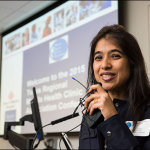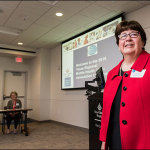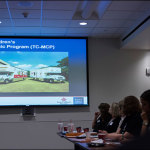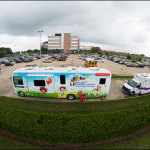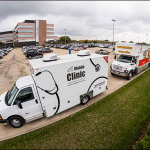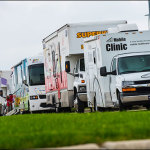
Texas Children’s mission is to create a community of healthy children through patient care, education and research. One way our physicians advance the health and safety of children is through their membership with the American Academy of Pediatrics (AAP) and the Texas Pediatric Society (TPS).
On September 30, 2013, Texas Children’s and the AAP signed a first-of-its-kind partnership agreement whereby every eligible faculty member of the Baylor College of Medicine Department of Pediatrics will be given membership in the AAP and the TPS.
“This partnership enhances Texas Children’s and Baylor’s visibility and representation on AAP committees and programs,” said Texas Children’s Physician-in-Chief Dr. Mark W. Kline. “Our physicians will have a greater voice in many issues impacting the health and well-being of American children and families.”
As members of the AAP and the TPS/TX Chapter, Texas Children’s faculty can access critical information on all child health-related issues and topics, advocate for children at the local and national levels to promote key child health care initiatives, and engage in scholarly pursuits and membership in AAP sections/councils in their respective areas of expertise.
“This is an important collaboration because it strengthens our shared dedication to the health of all children,” said Tina Morton, director of membership outreach and marketing at the American Academy of Pediatrics. “We are working together to further enhance quality health care delivery and advocacy for children and we are proud to have Texas Children’s as our partner.”
Since this partnership began a year and a half ago, Texas Children’s faculty has been actively involved with the AAP and TPS to champion the health, safety and well-being of children. Many of our physicians have been appointed to AAP committees/councils to spearhead child advocacy efforts.
- Dr. Robert Voigt is editor of the AAP’s textbook, “Developmental and Behavioral Pediatrics” and is program chair of the AAP section on Developmental and Behavioral Pediatrics.
- Dr. Robert Ricketts received the AAP’s prestigious Anne E. Dyson Child Advocacy Award celebrating the outstanding efforts of pediatricians-in-training as they work to improve the health of children in their communities. Ricketts recently wrote a children’s book titled, Our Little Soldiers, to encourage children with HIV to take their medicine.
- Dr. Mark Gilger is on the executive council of the AAP section of Gastroenterology and played an instrumental role in getting the U.S. Consumer Product Safety Commission to impose swift regulatory action that banned the sale of high-powered magnets in toys to prevent children from accidentally ingesting super strong, rare- earth (or Neodymium) magnets.
- Dr. Fernando Stein is one of the founding members of the AAP section on Critical Care, Dr. Carl Tapia serves on the AAP Community Access to Child Health Program, Dr. Mark Ward serves as president of the TPS, and Dr. Krithka Lingappan is the chair of Trainees and Early Career Neonatologists within the AAP section on Perinatal Pediatrics.
“We encourage our physicians to take advantage of their membership with the AAP and TPS,” said Texas Children’s gastroenterologist Dr. Bruno Chumpitazi, who is a member of the Texas Children’s/Baylor-AAP oversight committee. “Together, we can create a lasting and meaningful change for the patients we serve.”
Click here for more information about the AAP. Click here to learn more about the TPS.








